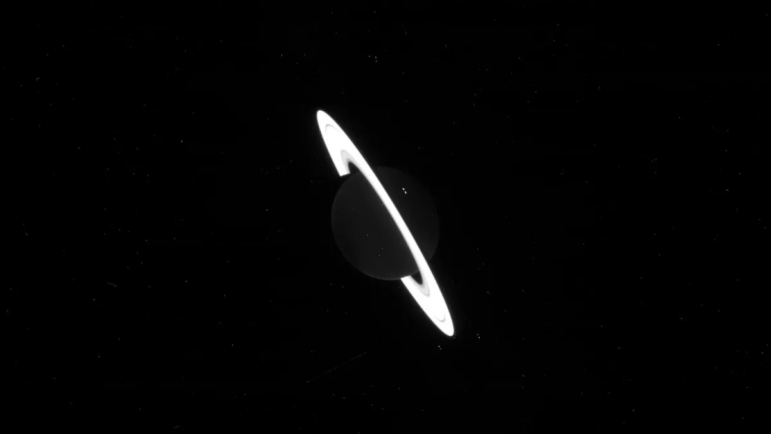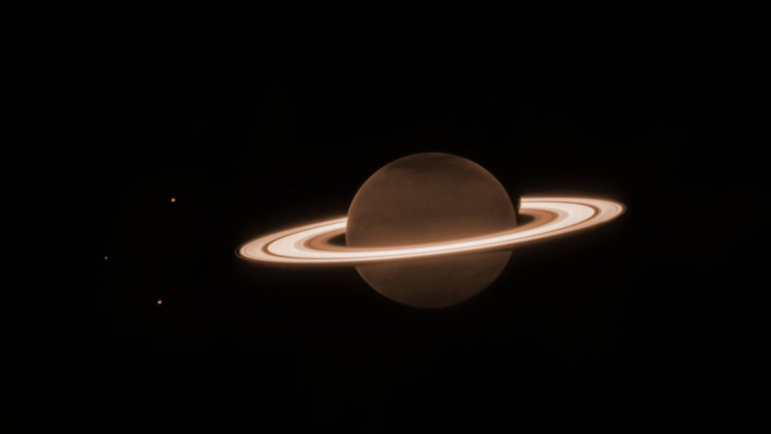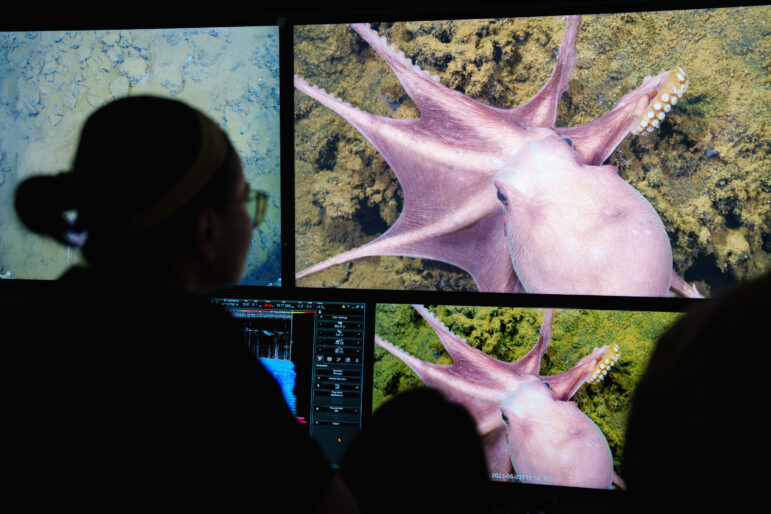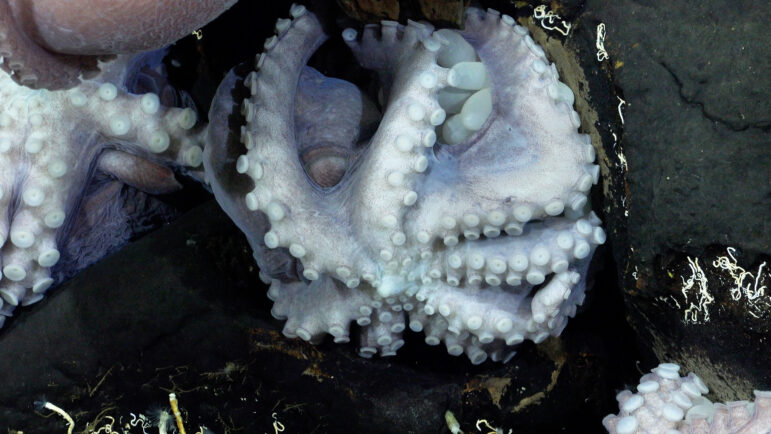
Editor’s note: It’s been a rough week. The news has been dominated by stories about death and injuries caused by intense heat and wildfire smoke, underwater implosions, a blink-and-you’ll-miss-it civil war in the midst of Russia’s continued war against Ukraine, U.S. Supreme Court decisions that upended decades of precedent, riots, and an impossible to silence drone from the patriarchy. We will continue to follow those stories, but for today, we wanted to hit the pause button and present three science stories that are a little more hopeful than what we have seen elsewhere in the news.
CAERDYDD, Cymru – Wales has become the first UK nation to ban snares (wire nooses) and glue traps. The Senedd voted unanimously on June 27 to outlaw the use of these devices as cruel and indiscriminate wildlife traps.
“The Welsh Government deserves huge credit for banning snares, inherently inhumane traps, which are completely incompatible with high animal welfare standards,” said Will Morton, head of public affairs at the League Against Cruel Sports. While certain types of self-locking snares were already illegal in Wales, other types of snares were still allowed.
“Wales is leading the way in protecting wildlife from cruelty and we’re calling on the UK and Scottish Governments to follow their lead and ban these brutal devices,” added Morton.
The ban will protect domestic animals that are trapped accidentally as well as eliminate their use against wild animals.

Senedd Cymru
The Royal Society for the Prevention of Cruelty to Animals (RSPCA), which has opposed the manufacture, sale and use of snares, called it “momentous.”
“The Agriculture (Wales) Bill has provided a massive opportunity to ensure that animal welfare is at the forefront of agriculture policy in Wales,” said David Bowles, RSPCA head of public affairs. “It will be a truly momentous occasion for animal welfare to see snares and glue traps banned in Wales and we’re proud of our campaigning efforts in recent years that have helped make this a reality.
“We are also pleased to see the bill could eventually provide financial incentives for farmers within the agriculture sector in Wales who work to high standards of animal welfare,” Bowles continued. “Therefore, we are delighted to see this bill has finally come to fruition – following tireless campaigning by RSPCA Cymru.”
“Today,” said Morton, “we are celebrating the move to end the cruelty inflicted on animals by the use of barbaric snares, something that will have the support of the vast majority of the Welsh people.
“It’s a fantastic move for animal welfare,” he added, “and we look forward to snares being banned in the rest of the UK soon.”
![]()
MOUNTAIN VIEW, California – As Interplanet Janet (“she’s a galaxy girl”) taught us in Schoolhouse Rock, “Mars is red and Jupiter’s big/ And Saturn shows off its rings.”
Just a few hours ago, the James Webb Space Telescope’s team released some unfinished images of Saturn, and they are jaw-droppingly cool. The images were captured last week from June 24 through 25 in research conducted Prof. Leigh Fletcher, an astronomer at the University of Leicester in the U.K., in as part of a project to study the planet’s rings, moons and atmosphere.
The awesome image of Saturn darkened and unveiling its rings was revealed during the JWST’s unofficial live feed, but the contrast with the telescope’s infrared feed is stunning.
Ready?

Unprocessed image of Saturn taken by the James Webb Space Telescope (Image credit: JWST)
and

Image of Saturn and some of its moons, captured by the James Webb Space Telescope’s NIRCam instrument on June 25, 2023. (Image credit: NASA, ESA, CSA, STScI, M. Tiscareno (SETI Institute), M. Hedman (University of Idaho), M. El Moutamid (Cornell University), M. Showalter (SETI Institute), L. Fletcher (University of Leicester), H. Hammel (AURA); image processing by J. DePasquale (STScI))
![]()
SAN JOSÉ, Costa Rica, and OKINAWA, Japan – We love octopuses. We learned some awesome news about them this week.
First, a deep-sea octopus nursery was discovered just off the coast of Costa Rica. Scientists reported fining nursery and seeing babies (squeee!) in a deep underwater mountain range. The teams of 18 international scientists from the Schmidt Ocean Institute said in a statement that the nursery is about 9,000 feet below of the ocean’s surface near hydrothermal vents in an area called the Dorado Outcrop. They believe the octopuses observed may be a new species.
“Scientists believe the octopus is potentially a new species of Muusoctopus, a genus of small to medium sized octopus without an ink sac,” the Schmidt statement said. “Additionally, the expedition reinforced the idea that some species of deep-sea octopus seek out low-temperature hydrothermal vents for brooding their eggs.”

In the control room on Research Vessel Falkor, Remotely Operated Vehicle (ROV) SuBastain’s video feeds and sensor readings are monitored. Here, the first octopus of the cruise is spotted, much to the excitement of the team. [Courtesy Schmidt Ocean Institute]
Schmidt added that “during the expedition, scientists used an underwater robot, ROV SuBastian, to observe the seamounts and baby octopuses. The dives were made publicly available in real time through the Schmidt Ocean Institute livestream.”
“The discovery of these low-temperature vent sites is difficult and can only be found with submersible vehicles like Schmidt Ocean Institute’s highly capable ROV SuBastian,” said Orcutt.

The biggest finding of the expedition is the confirmation that the small Dorado Outcrop in Costa Rica’s Pacific waters hosts an octopus nursery with hundreds of Muusoctopus species brooding viable eggs in low-temperature (12oC) hydrothermal fluids. This refutes a previous hypothesis that eggs are not viable in this area. [Courtesy Schmidt Ocean Institute]
Second, we learned this week that there is mounting evidence that octopuses not only dream, but that they dream in color. A team of scientists led by the Okinawa Institute of Science and Technology (OIST) have confirmed the existence of alternating sleep states in octopuses. The researchers found that despite their very different evolution and brain structure, octopuses exhibit sleep cycles similar to humans with REM or rapid eye movements. They may even experience nightmares.
“All animals seem to show some form of sleep, even simple animals like jellyfish and fruit flies,” said Sam Reiter, senior author of the study and professor at OIST. “But for a long time, only vertebrates were known to cycle between two different sleep stages.”
Sleep and dreaming in particularly may be responsible for consolidating and organizing memory. So, the research suggests that despite a different evolutionary path, there may be similarities in process and sleep needs. The current research expands previous research on octopus dreaming described in the video.
“The fact that two-stage sleep has independently evolved in distantly related creatures, like octopuses, which have large but completely different brain structures from vertebrates, suggests that possessing an active, wake-like stage may be a general feature of complex cognition,” said Leenoy Meshulam from UW.
The research was published in the journal Nature.
We hope some good news helps!
The Wild Hunt is not responsible for links to external content.
To join a conversation on this post:
Visit our The Wild Hunt subreddit! Point your favorite browser to https://www.reddit.com/r/The_Wild_Hunt_News/, then click “JOIN”. Make sure to click the bell, too, to be notified of new articles posted to our subreddit.